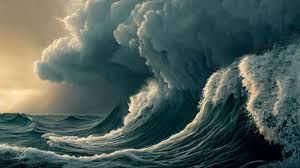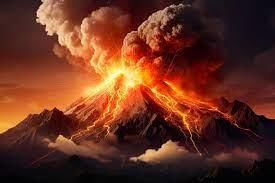Natural Disasters - 2 Class 5 Worksheet SST
Q1: Multiple Choice Questions.
(i) What causes a tsunami?
(a) Heavy rainfall
(b) Volcanic eruption or underwater earthquake
(c) Tornado
(d) Landslide
(ii) Which natural disaster is characterized by a rotating column of air?
(a) Hurricane
(b) Earthquake
(c) Tsunami
(d) Tornado
(iii) Which instrument measures the strength of an earthquake?
(a) Thermometer
(b) Barometer
(c) Richter scale
(d) Compass
(iv) Which natural disaster involves the sliding of soil down a slope?
(a) Tornado
(b) Hurricane
(c) Landslide
(d) Earthquake
Q2: Fill in the Blanks.
(i) A _______ is a powerful ocean wave caused by underwater earthquakes or volcanic eruptions.
(ii) A sudden shaking of the ground caused by movement along faults is called an _________.
(iii) A violent rotating column of air extending from a thunderstorm to the ground is known as a ______.
(iv) The slow movement of soil down a slope, often triggered by heavy rainfall, is called ______.
(v) A sudden and violent shaking of the ground, often leading to the displacement of water and subsequent flooding, is known as a ________.
(vi) A large wave caused by underwater volcanic eruptions is known as a ________.
(vii) ________ can erupt, spewing out hot ash, lava, and gases.
(viii) The _________ measures the magnitude or strength of an earthquake.
(ix) A sudden and violent shaking of the earth's surface is called an ________.
(x) The natural disaster that can occur due to the overflow of rivers during heavy rainfall is _______.
Q3: True or False.
(i) Earthquakes are caused by the movement of tectonic plates.
(ii) A hurricane is a type of geological disaster.
(iii) Volcanic eruptions can release lava, ash, and gases.
(iv) A landslide is a sudden shaking of the ground.
(v) Tsunamis are often triggered by underwater earthquakes.
Q4: Give One Word.
(i) The sudden shaking of the ground caused by movement along faults is called ______________.
(ii) A powerful ocean wave caused by underwater earthquakes or volcanic eruptions is known as ______________.
(iii) The slow movement of soil down a slope, often triggered by heavy rainfall, is called ______________.
(iv) The instrument used to measure the strength of an earthquake is the ______________ scale.
(v) A rotating column of air extending from a thunderstorm to the ground is known as
Q5: Short Answer Questions.
(i) What causes earthquakes? Explain briefly.
(ii) Describe the process of a volcanic eruption.
(iii) How do tsunamis form and why are they dangerous?
(iv) What safety measures can be taken to prepare for a tornado?
(v) How can human activities contribute to landslides?
You can access the solutions to this worksheet here.
|
33 videos|264 docs|50 tests
|
FAQs on Natural Disasters - 2 Class 5 Worksheet SST
| 1. What are the different types of natural disasters? |  |
| 2. How can we prepare for a natural disaster? |  |
| 3. What are the effects of natural disasters on communities? |  |
| 4. How do scientists predict natural disasters? |  |
| 5. What should I do during a natural disaster? |  |
















